Below you can find a complete list of Tunisian animals. We currently track 217 animals in Tunisia and are adding more every day!
Tunisia is a small North African country, situated between Algeria to the west, Libya to the east, and the Mediterranean Sea to the north. Historically it was the seat of the Carthaginian Empire, still remembered today for its rivalry with Rome. The coast of Tunisia is marked by a pleasant Mediterranean climate and plenty of rich farmland, while the interior is mostly comprised of dry deserts and hills. One of the longest ranges is the Tunisian Dorsal or High Tell. It’s comprised of low rolling hills that extend from the Saharan Atlas mountains of Algeria. The country is also rich in wetlands and forests (although much of this has been converted into farms).
The Official National (State) Animal Of Tunisia

The dromedary camel only has one hump.
©Wolfgang Zwanzger/Shutterstock.com
Tunisia doesn’t necessarily have a national animal, but it does have a few traditional symbols, including the dromedary, which, unlike the camel, only has one hump. Also known as the Arabian camel or the one-humped camel, the dromedary is the tallest of the camel species, with males standing at over 9 feet and females standing at almost 6 feet tall. The males can weigh over 1300 pounds while females can weigh up to 1200 pounds.
This one-humped camel has an average lifespan of 40 to 50 years and can be found in the Sahara Desert, although this species of camel is no longer found in the wild, they do comprise 94% of the world’s camel population.
Where To Find The Top Wild Animals In Tunisia
Tunisia has set aside some 17 unique national parks to protect its natural wildlife, amongst them are two that are listed as UNESCO World Heritage Sites.
- Ichkeul National Park, which derives its name from the nearby lake, is located just outside the city of Bizerte, near the northernmost point in all of Africa. This wetland area was named a UNESCO World Heritage Site for its importance as a winter bird sanctuary. Among the most interesting birds here are the graylag goose, coot, and wigeon.
- The Zembra and Zembretta National Park encompass two Mediterranean islands located in the Gulf of Tunisia. Officially declared an important UNESCO Biosphere Reserve in 1977, the park hosts thousands of migrating birds every year, including the threatened Mediterranean shearwater.
- The El Feijda National Park, located in the northwest governorate of Jendouba, encompasses almost 7,000 acres of forests, mountains, natural springs, and lakes. Visitors might be able to find the Barbary stag, Barbary boar, African golden wolf, and other mammals here.
- Chambi National Park, located in the western Kasserine governorate, is a UNESCO Biosphere Reserve surrounded by the country’s highest peak, Mount Chambi, which rises some 5,000 feet above sea level. Here one can find the Barbary sheep, Cuvier’s gazelle, Egyptian vulture, peregrine falcon, Tunisian crossbill, Bonelli’s eagle, and plenty of reptiles and snakes.
- Finally, the Boukornine National Park, located less than 10 miles away from the capital city of Tunis, encompasses nearly 5,000 acres of Aleppo cedar and pine forests at the foothills of the Jebel Boukornine. Both the mountain gazelles and Etruscans shrews (one of the smallest mammals in the world) are found here.
The Zembra and Zembretta National Park is located on two islands – Zembra and Zembretta. They are both located in the northeastern gulf of Tunis and comprise a national park that is a haven for people that want to appreciate the breathtaking landscapes and enjoy hiking, and camping. Zembra has 911 miles of rocky cliffs while Zembretta, the smaller of the two, has almost 5 miles to explore.
The Most Dangerous Animals In Tunisia Today

The fat-tailed scorpion is one of the most dangerous groups of scorpions in the world and has stingers similar to the standard scorpion shown here.
©EcoPrint/Shutterstock.com
The dry arid regions of Tunisia are home to several kinds of dangerous wildlife that pose a risk to people’s health. They should be avoided at all costs.
- Horned Viper – Easily identified by the presence of unique horns above the eyes, the horned viper will sometimes lie submerged in the sand, waiting for prey to come by. The venom itself can cause pain, swelling, nausea, vomiting, and necrosis, and death can sometimes occur if the venom is left untreated.
- Egyptian Cobra – These reptiles are easily identified from their large hood and brown and black-colored body. The toxic venom affects the nervous system by stopping the nerves from signaling each other. In the short term, it can cause several unpleasant symptoms such as pain, swelling, blistering, and dizziness. Death can occur in untreated cases from complete respiratory failure.
- Fat-tailed Scorpion – The fat-tailed scorpion should be completely avoided. The venom can result in pain, swelling, and internal bleeding. If left untreated, it can eventually lead to heart or respiratory failure.
The fat-tailed scorpion is one of the most dangerous groups of scorpions in the world. Because of their aggressive temperament and lethal venom, they are potentially deadly to humans. Their toxins can attack the central nervous system and acts very quickly, causing paralysis and respiratory failure. They have a length of 3 to 4 inches and can be black, dark brown, or reddish in color.
Endangered Animals In Tunisia
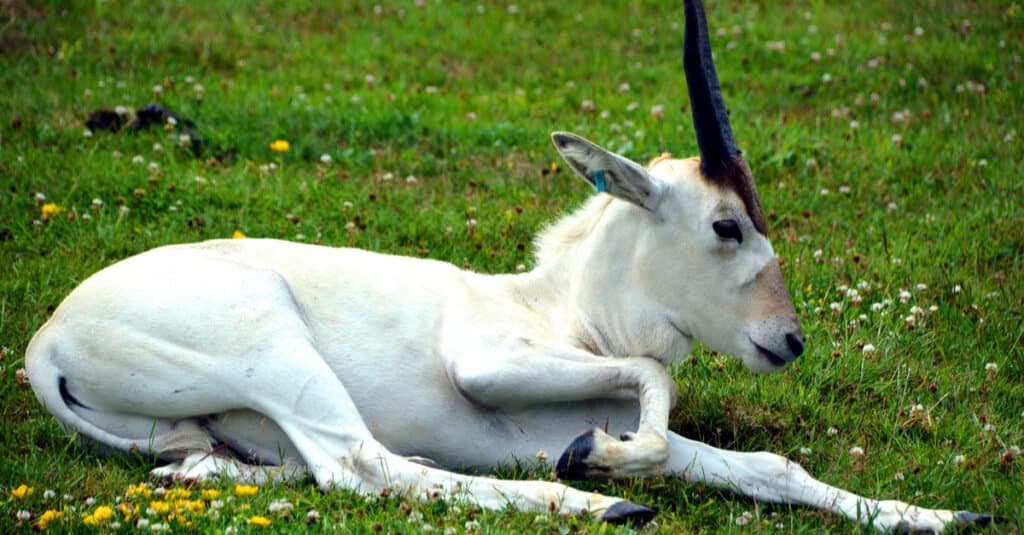
Addax are native to the Saharan Desert.
©meunierd/Shutterstock.com
Over the centuries, hunting and habitat loss (particularly from the spread of agriculture and farmland) have taken their toll on the local wildlife. While the country has made great strides in extending the protection of its animals, the following species are still endangered.
- Rhim Gazelle – This endangered species has been hunted relentlessly for sport and for its meat and horns. It’s also losing habitat at a precipitous rate. It’s estimated that no more than 2,500 individuals now remain in the wild.
- Addax – Also known as the white antelope or the screwhorn antelope, this species is native to the Sahara Desert. At some point in the recent past, it became completely extinct in Tunisia as a result of overhunting and habitat loss. More recently, conservationists have made some attempts to reintroduce it into the country.
- Dama Gazelle – The history of this Saharan antelope is quite similar to the addax. After being hunted to local extinction, it was then later reintroduced into the country in an effort to preserve it.
- Mediterranean Monk Seal – Once common throughout the Mediterranean Sea, this seal is now seldom seen near the shores of Tunisia. Less than 700 remain in the wild.
The Addax is an extremely rare deer due to unregulated hunting and poaching, although it is a common species in captivity. It is the most desert-adapted African antelope with a weight between 220 to 300 pounds, a height of 4 feet, and long spiraled horns. Current efforts to restore their populations in Tunisia are ongoing.
The Rarest Animal In Tunisia
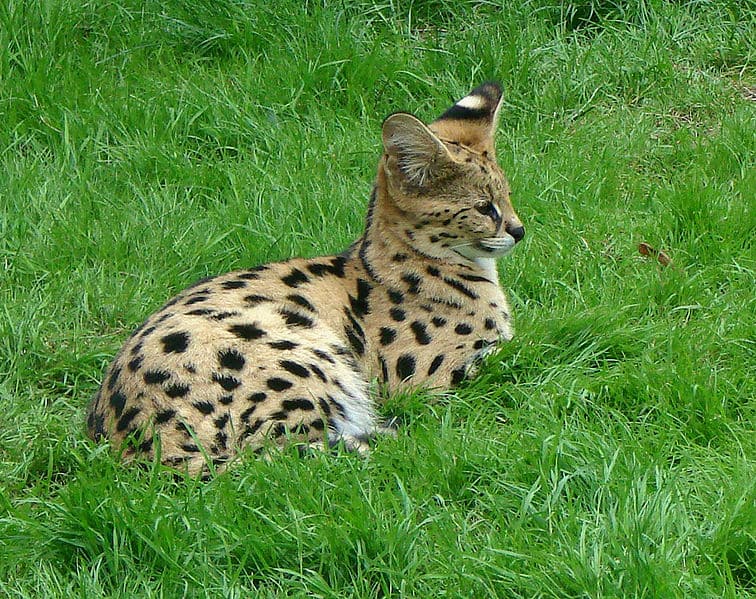
Servals were reintroduced to Feijda National Park in Tunisia.
©Vassil – Public Domain
The serval is a wild cat only found in Africa. They have a small population in Tunisia and prefer wetter habitats where the rodent population is higher. They have a lifespan of 10 years in the wild, although that is doubled when in captivity. Servals stand at 2 feet tall, with weights between 17 to 40 pounds, with males being heavier than females. Although they are currently not listed as endangered, their habitat is in danger. Servals were reintroduced to Feijda National Park in Tunisia.
The Largest Animals In Tunisia
The Barbary stag, also known as the Atlas deer and the African elk, is the only species of surviving deer native to North Africa. It lives in the humid, dense forests of Tunisia. This stag is an herbivore and survives on plants and leaves. With weights between 180 and 240 pounds, and heights of up to almost 4 feet, it is smaller than a typical red deer. Once the largest animal in Tunisia, the now extinct Barbary Lion .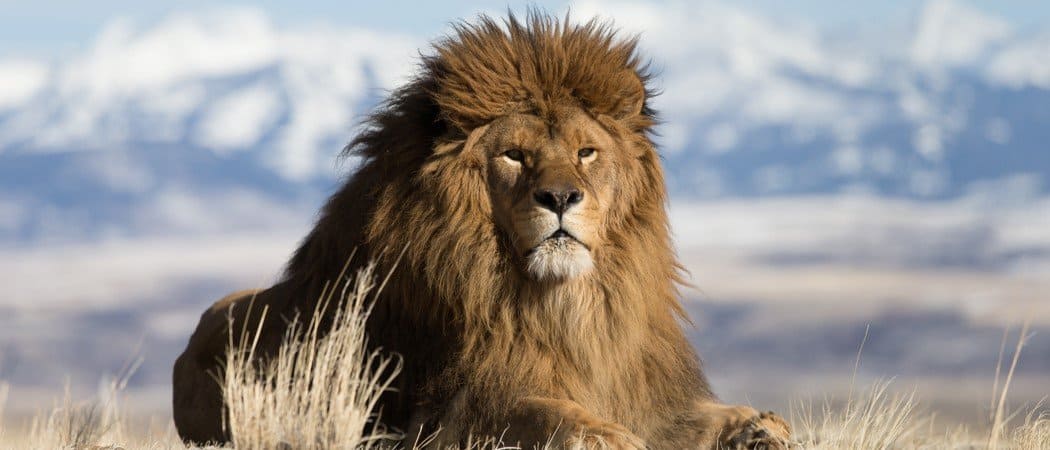
©Dennis W Donohue/Shutterstock.com
The Barbary Lion, which was once one of the largest animals to exist in Tunisia, is now extinct. Also referred to as the African lion, the Berber lion, the Atlas lion, and the Egyptian lion, it lived off of the Barbary Coast of North Africa in the deserts and mountains. They were once one of the largest lion sub-species with weights of 507 pounds and standing at almost 3.5 feet at the shoulder. These lions are now only found in zoos and in an effort to preserve them are in protective breeding programs.
Tunisian Animals

Addax
The hooves of the addax are splayed and have flat, springy soles, one of the adaptations that help it walk over sand.

Admiral Butterfly
Stunningly beautiful wings
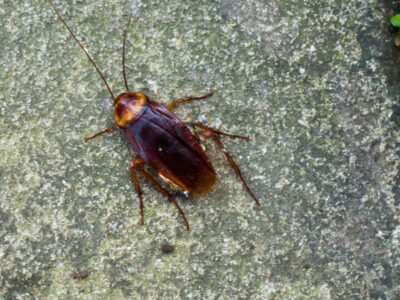
American Cockroach
Despite its name, actually originated from Africa and the Middle East

Ant
First evolved 100 million years ago!

Antelope
Renew their horns every year!
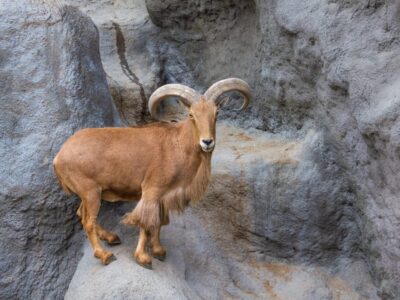
Aoudad Sheep
More aoudad sheep live in the United States than in their original North African habitat.

Armyworm
They are so named because they "march" in armies of worms from one crop to another in search of food

Banana Spider
People spin clothing and fishing nets out of these spiders’ silk.

Barb
There are over 1768 known species!

Barn Owl
Found everywhere around the world!

Barn Swallow
Older offspring help care for new hatchlings.

Bat
Detects prey using echolocation!

Bed Bugs
Bed bugs feed for 4-12 minutes.

Bee
Rock paintings of bees date back 15,000 years

Beetle
There are more than 350,000 different species

Beewolf wasp
They hunt bees

Bird
Not all birds are able to fly!

Biscuit Beetle
The biscuit beetle form a symbiotic relationship with yeast

Black Widow Spider
They typically prey on insects!

Brazilian Treehopper
“Mild-Mannered Minimonsters”
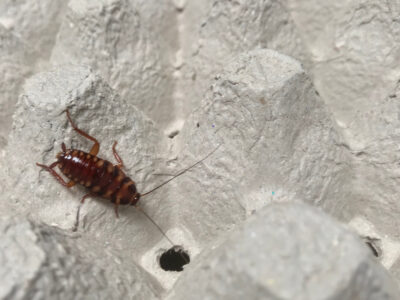
Brown-banded Cockroach
Females glue egg cases to furniture

Brown Dog Tick
Can live its entire life indoors

Bumblebee
The most common species of bee!

Butterfly
There are thought to be up 17,500 species!

Caecilian
Some species' babies use their hooked or scraper-like teeth to peel off and eat their mother's skin
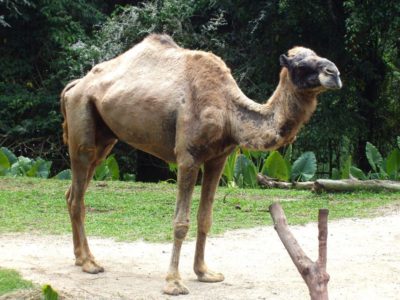
Camel
Can survive without water for 10 months!

Caracal
Has 20 different muscles in it's ears!

Carpenter Ant
Carpenter ants can lift up to seven times their own weight with their teeth!
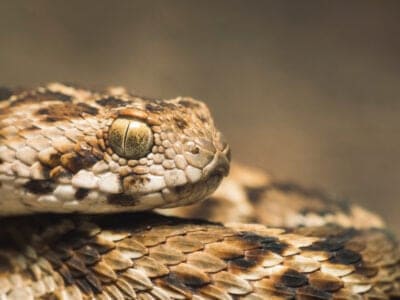
Carpet Viper
The Carpet Viper probably bites and kills more people than any other species of snake.

Cat
May have been domesticated up to 10,000 years ago.

Caterpillar
The larvae of a moth or butterfly!

Catfish
There are nearly 3,000 different species!

Centipede
There are about 3,000 documented species!
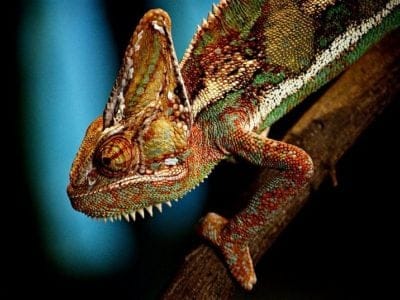
Chameleon
There are more than 160 different species!
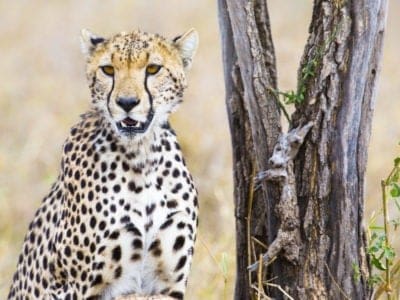
Cheetah
The fastest land mammal in the world!

Chicken
First domesticated more than 10,000 years ago!
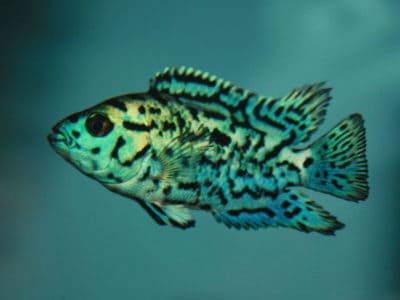
Cichlid
There are more than 2 000 known species!

Cockroach
Dated to be around 300 million years old!

Codling Moth
Pupae are able to undergo diapause to survive poor fruit yield years and winter.

Common Buzzard
The most common raptor in the UK!

Common Furniture Beetle
The common furniture beetle feeds exclusively on wood

Common House Spider
House spiders have the ability to eat most insects in a home.

Common Raven
A group of ravens is called an unkindness or a conspiracy.

Cormorant
They can fly 35 mph and dive 150 feet below water.

Cow
There are nearly 1.5 billion worldwide!

Crab
There are 93 different crab groups

Crab Spider
Crab Spiders can mimic ants or bird droppings

Crane
Many are critically endangered species!

Cricket
Male crickets can produce sounds by rubbing their wings together

Crocodile
Have changed little in 200 million years!

Crow
A group of these birds is called a Murder.
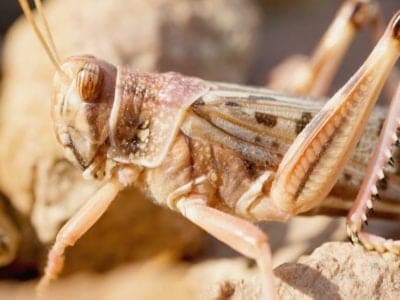
Desert Locust
Solitary locusts are grey while gregarious locusts are yellow with stripes.
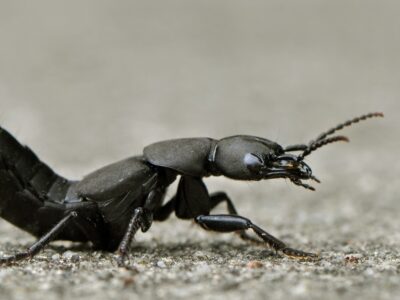
Devil’s Coach Horse Beetle
The Devil’s coach horse beetle can emit a noxious substance to deter predators

Dog
First domesticated in South-East Asia!

Dog Tick
Dog ticks feed on dogs and other mammals

Donkey
First domesticated 5,000 years ago!

Dragonfly
It's larvae are carnivorous!

Dried Fruit Moth
In the event of adverse environmental conditions, dried fruit moth larvae will become dormant and stop developing.

Duck
Rows of tiny plates line their teeth!

Dung Beetle
The dung beetle can push objects many times its own weight

Earthworm
They are hermaphrodites, which means they have male and female organs

Earwig
There are nearly 2,000 different species!

Eel
Eels can be a mere few inches long to 13 feet!
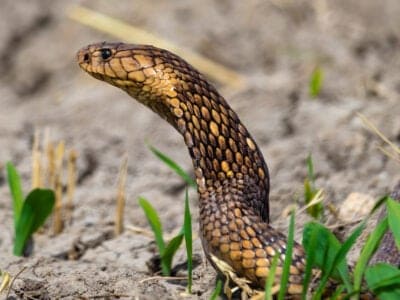
Egyptian Cobra (Egyptian Asp)
The Egyptian cobra is one of the largest cobras in Africa.
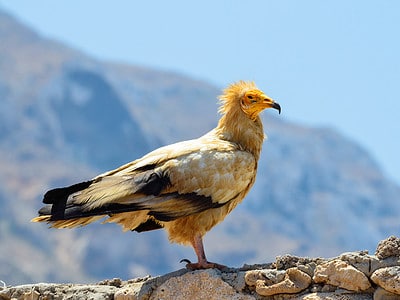
Egyptian Vulture
They steal large ostrich eggs and use rocks and pebbles to crack the shells.
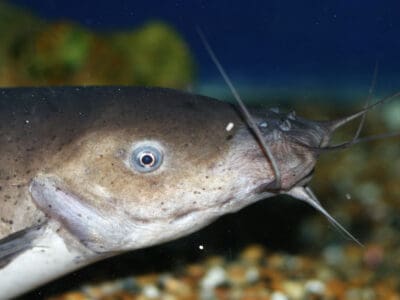
Electric Catfish
The electric catfish can discharge an electric shock up to 450 volts

Elephant
Spends around 22 hours a day eating!

Elephant Shrew
Found exclusively on the African continent!
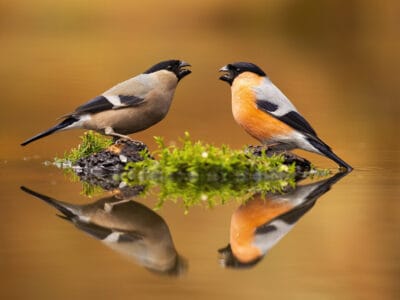
Eurasian Bullfinch
The shy eurasian bullfinch prefers to forage very close to cover.
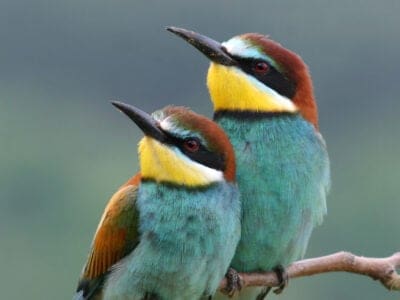
European Bee-Eater
They can eat up to 250 bees per day!
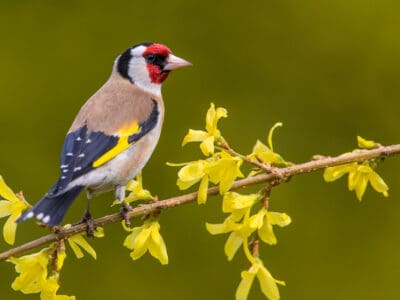
European Goldfinch
They are frequent visitors to backyard feeders, especially those containing niger seeds.
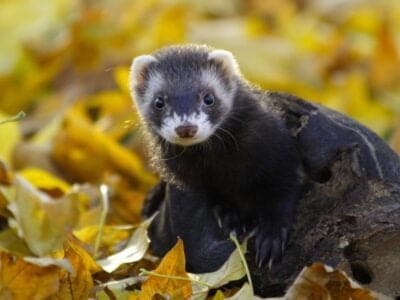
European Polecat
Its fur changes color in the winter!

European Robin
Male robins are so aggressive and territorial that they will attack their own reflections.

Falcon
The fastest creatures on the planet!

False Widow Spider
False spiders actually prey on black widow spiders and other hazardous spiders

Firefly
The firefly produces some of the most efficient light in the world
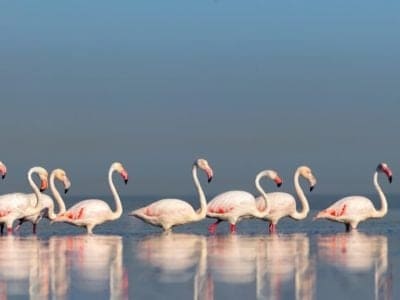
Flamingo
Sleeps on just one leg!

Flea
Adult fleas can jump up to 7 inches in the air

Fly
There are more than 240,000 different species!

Fox
Only 12 species are considered "true foxes"

Frog
There are around 7,000 different species!

Fruit Fly
Fruit flies are among the most common research animals in the world

Gazelle
Named for the Arabic word for love poems

Gecko
There are thought to be over 2,000 species!

Gerbil
Originally known as the Desert Rat!

German Cockroach
The most common type of urban roach

Glass Lizard
Can grow up to 4ft long!

Glowworm
Found inhabiting dense woodland and caves!

Gnat
Males form large mating swarms at dusk

Goat
Most closely related to the Sheep!

Goldcrest
The goldcrest never starts moving and needs to consume for most of the day to survive. Therefore, in the colder months, it's best that eat 90% a day.

Golden Eagle
Their calls sound like high-pitched screams, but they are quiet most of the time.

Golden Oriole
Migrates between Europe and Asia!

Grasshopper
There are 11,000 known species!

Green Bee-Eater
Mainly eats honeybees!

Gypsy Moth
One of the most invasive species in the world

Hamster
Able to run as quickly backwards as forwards!

Hare
Can reach speeds of over 50 mph!

Hawk Moth Caterpillar
Many hawk moth caterpillars eat toxins from plants, but don’t sequester them the way milkweed butterflies do. Most toxins are excreted.

Hedgehog
Thought to be one of the oldest mammals on Earth!

Heron
Inhabits wetlands around the world!

Honey Bee
There are only 8 recognized species!

Hoopoe
Stunning bird with a stinky way to deter predators!
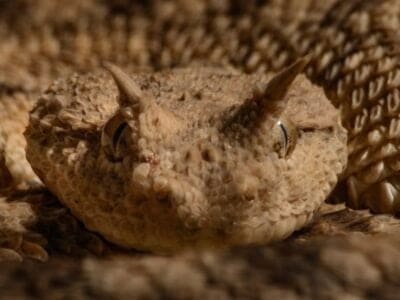
Horned Viper
Horned vipers sidewind across the desert sands of their home.

Horse
Has evolved over 50 million years!

Horsefly
Horseflies have been seen performing Immelmann turns, much like fighter jets.

Housefly
The fly has no teeth

Human
Thought to have orignated 200,000 years ago!

Huntsman Spider
Some huntsman spiders have an interesting way of moving around. Some cartwheel while others do handsprings or backflips.
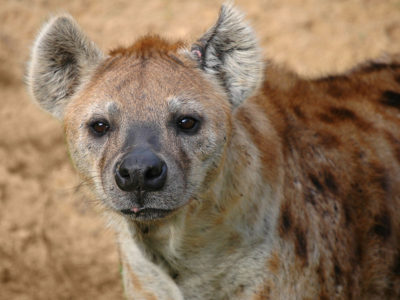
Hyena
There are four different species!

Ibis
Found in swamps, marshes and wetlands!

Insects
There are an estimated 30 million species!

Jacana
The jacana has the ability to swim underwater

Jack Crevalle
One of the biggest species in the Caranx genus
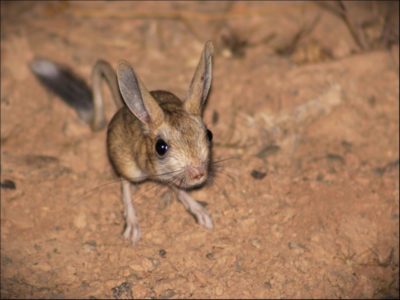
Jerboa
Tiny rodent with a kangaroo-like jump!

Jumping Spider
Some can jump 50 times the length of their bodies

Kingfisher
Inhabits wetlands and woodlands worldwide!

Ladybug
There are more than 5,000 species worldwide!

Leech
Has 10 pairs of eyes!

Liger
The offspring of a lion and tiger parents!

Lizard
There are around 5,000 different species!

Locust
Each locust can eat its weight in plants each day.

Maggot
Will only live in wet areas

Magpie
They are found across Europe, Asia and Africa!

Mayfly
There are 2,500 known species worldwide!

Mealybug
They have a symbiotic relationship with ants.

Millipede
Some species have a poisonous bite!

Mole
Primarily hunts and feeds on Earthworms!

Mole Cricket
Adult Mole crickets may fly as far as 5 miles during mating season and are active most of the year.
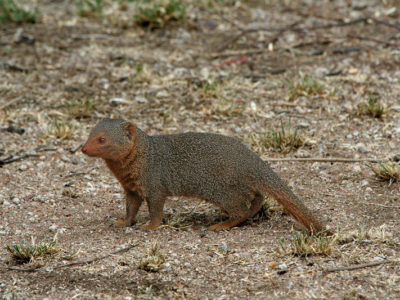
Mongoose
Range in size from just 1 to 3 foot!

Mongrel
Has characteristics of two or more breeds!

Monitor Lizard
Some species are thought to carry a weak venom!

Monkey
There are around 260 known species!

Moorhen
Feeds on aquatic insects and water-spiders!

Mosquito
Only the female mosquito actually sucks blood

Moth
There are 250,000 different species!

Mouse
Found on every continent on Earth!

Mule
The offspring of a horse and donkey parents!

Nematode
Nematodes range in size from 1/10 of an inch to 28 feet long

Nightingale
Named more than 1,000 years ago!

No See Ums
There are more than 5,000 species.

Northern Pintail
Northern pintails migrate at night with speeds reaching 48 miles per hour!

Orb Weaver
Females are about four times the size of males

Osprey
They reuse nesting sites for 70 years!

Otter
There are 13 different species worldwide

Owl
The owl can rotate its head some 270 degrees

Parrot
Can live for up to 100 years!

Peregrine Falcon
Fastest animal on Earth

Pheasant
Females lay between 8 and 12 eggs per clutch!

Pigeon
They can find their way back to their nests from up to 1300 miles away.

Pompano Fish
They are bottom-feeders

Praying Mantis
The mantis can turn its head 180 degrees.
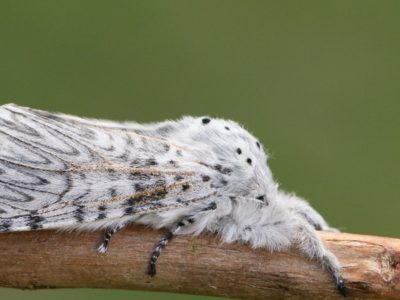
Puss Moth
Caterpillars squirt formic acid!

Quail
Inhabits woodland and forest areas worldwide!

Rabbit
There are more than 300 different species!

Rat
Omnivores that eat anything!

Red Deer
A male red deer shows his age in his antlers, which become longer and more branched every year.
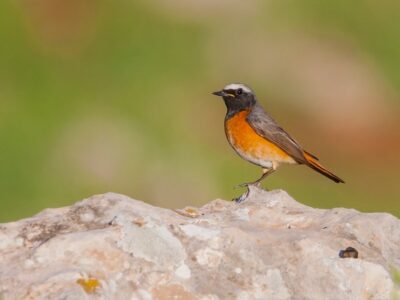
Redstart
They build their nests off the ground in tree holes, cavities, stone walls, and roofs

Rhinoceros
It's horns are made from keratin!

River Turtle
Inhabits freshwater habitats around the world!

Robin
There are more than 45 species in Australia alone!
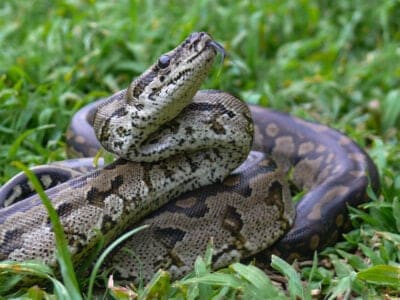
Rock Python
Rock pythons may have crossbred with the escaped Burmese pythons in Florida.

Rodents
The capybara, the world’s largest rodent, likes to be in and around bodies of water. Because of this, the Catholic Church in South America decided that it was a fish, and people were allowed to eat it during Lent and First Fridays.

Rooster
Will mate with the entire flock!

Ruddy Duck
Ruddy duck breeding males have bright blue bills!

Sable Ferret
Ferrets were used during the Revolutionary War to keep down the rat population.

Sand Crab
The sand crab burrows beneath the sand with its tail
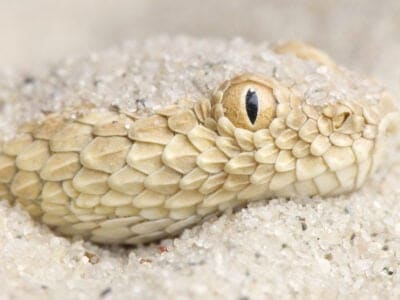
Sand Viper
Sand vipers are nuisance snakes in some areas.

Scorpion
There are around 2,000 known species!

Sea Eagle
The sea eagle tends to mate for life with a single partner

Seahorse
Males give birth to up to 1,000 offspring!

Sheep
Around 35 million in the English countryside!

Short-Eared Owl
The short-eared owl is one of the most widespread owl species in the world, covering five continents.

Shrew
The spinal column of the shrew Scutisorex somereni is so strong and reinforced that it can support the weight of an adult human.

Shrimp
There are 2,000 different species worldwide!

Skink Lizard
Some skinks lay eggs in some habitats while giving birth to skinklets in other habitats.

Slug
They glide around on one foot, which is aided by the slime they produce

Smokybrown Cockroach
Has up to 45 eggs per egg case

Snail
There are nearly 1,000 different species!

Snake
There are around 4,000 known species worldwide
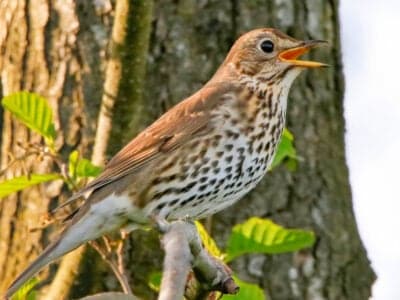
Song Thrush
A male song thrush can have over 100 phrases in his repertoire of songs and can imitate pet birds, telephones and other man-made objects.

Sparrow
There are 140 different species!

Spider Wasp
They prey on spiders to feed their larvae or they parasitize other spider wasps.
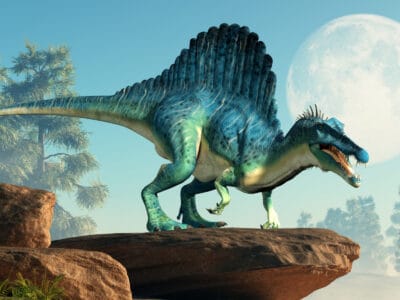
Spinosaurus
The Spinosaurus is the biggest carnivorous dinosaur ever discovered!

Squirrel
Small rodents found in woodlands worldwide!

Stick Insect
There are more than 3,000 different species!

Stork
They can’t sing like other birds.
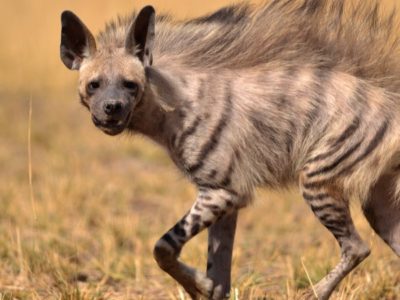
Striped Hyena
The striped hyenas usually mark their territories with the help of the scent gland secretions from their anal pouch.

Swan
Populations have been affected by pollution!

Tarantula Hawk
Tarantula hawks are excellent pollinators, especially for milkweed.

Termite
Their mounds can be up to 9 meters tall!
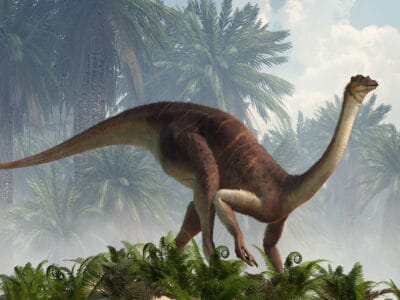
Theropod
Some theropods had feathers and may have been ancestors of modern birds.
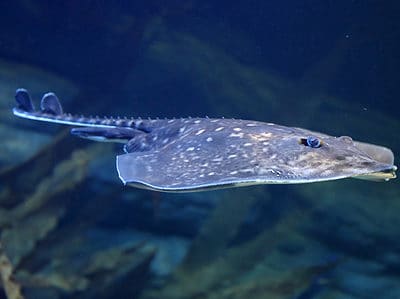
Thornback Ray
The skate with the biggest spines!

Thrush
The American robin is called the robin because its red breast reminded European settlers of the robin back in the old country.

Tick
They inject hosts with a chemical that stops them from feeling the pain of the bite

Tiger Beetle
The adult tiger beetle is one of the fastest land insects in the world

Tortoise
Can live until they are more than 150 years old!

Tree Frog
Found in warmer jungles and forests!

Turtles
Some species of aquatic turtles can get up to 70 percent of their oxygen through their butt.

Vinegaroon
Vinegaroons can spray 19 times before the glands are depleted

Viper
Vipers are one of the most widespread groups of snakes and inhabit most

Vulture
There are 30 different species worldwide!

Wasp
There are around 75,000 recognised species!

Water Buffalo
Has been domesticated for thousands of years!

White Ferret / Albino Ferrets
There are two different types of white ferrets!

Wolf Spider
Carnivorous arachnid that hunts its prey.

Woodlouse
This animal can roll up into a ball

Woodlouse Spider
Unlike most spiders, woodlouse spiders don’t build a web.

Woodpecker
There are 200 different species!

Worm
Doesn’t have eyes.

Wryneck
They feign death by making their bodies limp and closing their eyes.
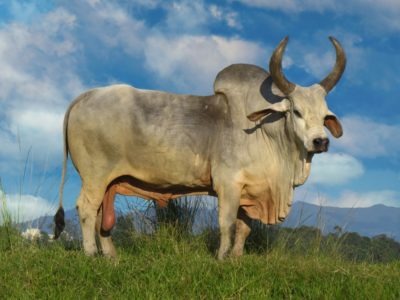
Zebu
There are around 75 different species!
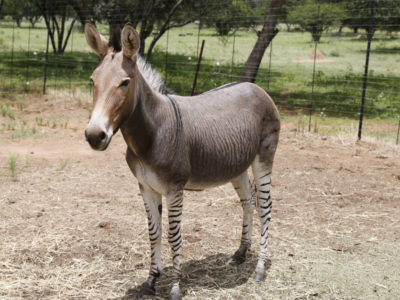
Zonkey
The offspring of Zebra and Donkey parents!
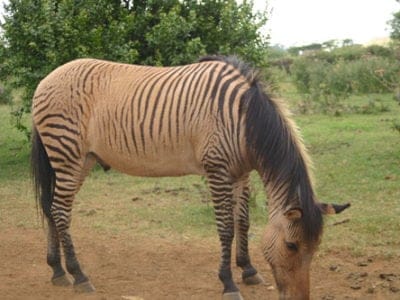
Zorse
The offspring of a Zebra and Horse parents!
Tunisian Animals List
- Addax
- Admiral Butterfly
- American Cockroach
- Ant
- Antelope
- Aoudad Sheep
- Armyworm
- Banana Spider
- Barb
- Barn Owl
- Barn Swallow
- Bat
- Bed Bugs
- Bee
- Beetle
- Beewolf wasp
- Bird
- Biscuit Beetle
- Black Widow Spider
- Brazilian Treehopper
- Brown-banded Cockroach
- Brown Dog Tick
- Bumblebee
- Butterfly
- Caecilian
- Camel
- Caracal
- Carpenter Ant
- Carpet Viper
- Cat
- Caterpillar
- Catfish
- Centipede
- Chameleon
- Cheetah
- Chicken
- Cichlid
- Cockroach
- Codling Moth
- Common Buzzard
- Common Furniture Beetle
- Common House Spider
- Common Raven
- Cormorant
- Cow
- Crab
- Crab Spider
- Crane
- Cricket
- Crocodile
- Crow
- Cuckoo
- Desert Locust
- Devil’s Coach Horse Beetle
- Dog
- Dog Tick
- Donkey
- Dormouse
- Dragonfly
- Dried Fruit Moth
- Duck
- Dung Beetle
- Earthworm
- Earwig
- Eel
- Egyptian Cobra (Egyptian Asp)
- Egyptian Vulture
- Electric Catfish
- Elephant
- Elephant Shrew
- Eurasian Bullfinch
- European Bee-Eater
- European Goldfinch
- European Polecat
- European Robin
- Falcon
- False Widow Spider
- Firefly
- Flamingo
- Flea
- Fly
- Fox
- Frog
- Fruit Fly
- Gazelle
- Gecko
- Gerbil
- German Cockroach
- Glass Lizard
- Glowworm
- Gnat
- Goat
- Goldcrest
- Golden Eagle
- Golden Oriole
- Grasshopper
- Green Bee-Eater
- Gypsy Moth
- Hamster
- Hare
- Hawk Moth Caterpillar
- Hedgehog
- Heron
- Honey Bee
- Hoopoe
- Horned Viper
- Horse
- Horsefly
- Housefly
- Human
- Huntsman Spider
- Hyena
- Ibis
- Insects
- Jacana
- Jack Crevalle
- Jerboa
- Jumping Spider
- Kingfisher
- Ladybug
- Leech
- Liger
- Lizard
- Locust
- Maggot
- Magpie
- Mayfly
- Mealybug
- Millipede
- Mole
- Mole Cricket
- Mongoose
- Mongrel
- Monitor Lizard
- Monkey
- Moorhen
- Mosquito
- Moth
- Mouse
- Mule
- Nematode
- Nightingale
- No See Ums
- Northern Pintail
- Orb Weaver
- Osprey
- Otter
- Owl
- Parrot
- Peregrine Falcon
- Pheasant
- Pigeon
- Pompano Fish
- Praying Mantis
- Puss Moth
- Quail
- Rabbit
- Rat
- Red Deer
- Redstart
- Rhinoceros
- River Turtle
- Robin
- Rock Python
- Rodents
- Rooster
- Ruddy Duck
- Sable Ferret
- Sand Crab
- Sand Viper
- Scorpion
- Sea Eagle
- Seahorse
- Sheep
- Short-Eared Owl
- Shrew
- Shrimp
- Skink Lizard
- Slug
- Smokybrown Cockroach
- Snail
- Snake
- Song Thrush
- Sparrow
- Spider Wasp
- Spinosaurus
- Squirrel
- Stick Insect
- Stork
- Striped Hyena
- Swallowtail Butterfly
- Swan
- Tarantula Hawk
- Termite
- Theropod
- Thornback Ray
- Thrush
- Tick
- Tiger Beetle
- Tortoise
- Tree Frog
- Turtles
- Vinegaroon
- Viper
- Vulture
- Wasp
- Water Buffalo
- White Ferret / Albino Ferrets
- Wolf Spider
- Woodlouse
- Woodlouse Spider
- Woodpecker
- Worm
- Wryneck
- Zebu
- Zonkey
- Zorse
Animals In Tunisia FAQs (Frequently Asked Questions)
What animals live in Tunisia?
Tunisia is home to dozens of different species of mammals, including antelopes, bats, rodents, foxes, wild cats, and hyenas, as well as snakes and reptiles. But the country is particularly rich in all kinds of birds, including waterfowl, larks, warblers, and birds of prey.
What dangerous animals live in Tunisia?
Tunisia is home to several species of snakes and scorpions. While wolves and hyenas can be dangerous in certain circumstances, actual attacks on people are exceptionally rare.
What is the national animal of Tunisia?
Tunisia was never given an official national animal by the government, but it does have traditional cultural symbols like the dromedary.
Are there bears in Tunisia?
Tunisia was once home to the Atlas bear, a unique subspecies of the brown bear. During Roman times, thousands of these bears were hunted for traditional sport or forced to fight in the arena. The invention of firearms also had a calamitous effect on the remaining population numbers. They were officially declared extinct by the 19th century.
Are there elephants in Tunisia?
The entire region was once home to the North African elephant. These were the famous elephants that Hannibal used to cross the Alps during the Punic Wars against Rome. However, these elephants became extinct around 100 AD, probably from overexploitation.






